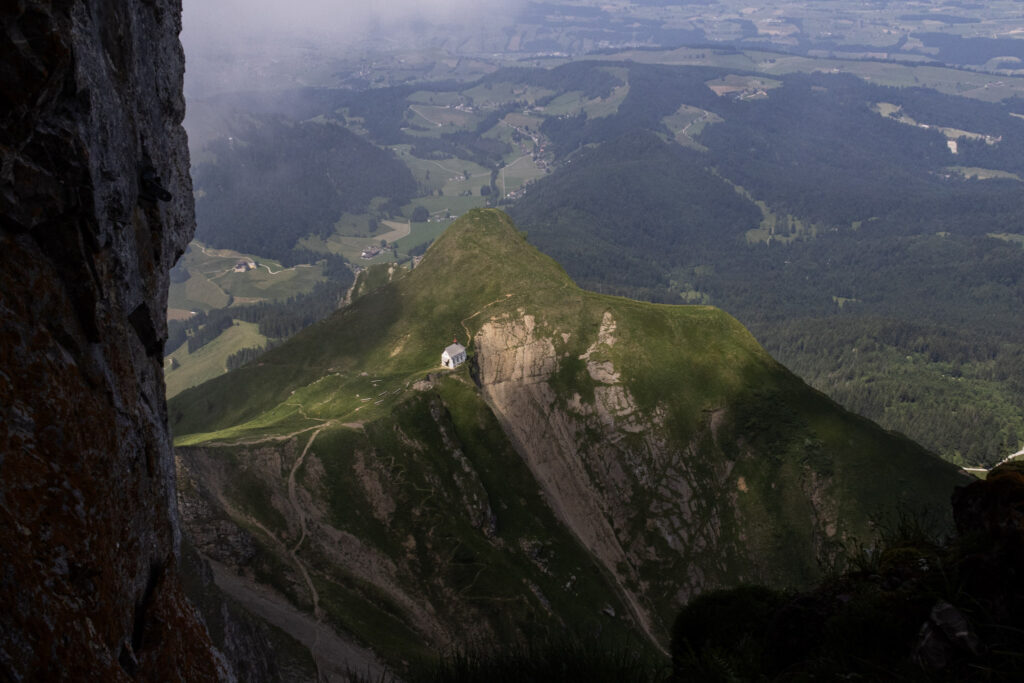
“I am very impressed by Switzerland,” a woman said in a long, southern draw as she washed her hands from a bathroom at 6,983 feet in the sky.
At such great heights, I expected to hear only the sounds of cowbells and the occasional wind through a paragliding wing. Yet I was surprised to hear several US accents around me, perhaps those able to afford to escape the current administration and hide in a secluded cave buried within the Swiss Alps.
While flocks of tourists may at times raise red flags (e.g. Venice), I take it as a sign of a truly worthwhile destination. Touristy cities are like wedding songs heard a thousand times over- they are popular for a reason.
One such internationally acclaimed spot is Lucerne and its nearby Mount Pilatus.
- Traveling to Lucerne on the Swiss Saver Pass
- The Golden Round Trip to Mount Pilatus
- Step 1: Boat ride from Lucerne to Alpnachstad
- Step 2: Ride in the world’s steepest cogwheel train to Mount Pilatus
- Step 3: Descend from Mount Pilatus to Kriens in a series of cable cars
- Step 4: Take bus #1 from Kriens to Lucerne
- Evening in Lucerne
- What to pack
- Clothing
- Daypack Essentials
- Travel Necessities
Traveling to Lucerne on the Swiss Saver Pass
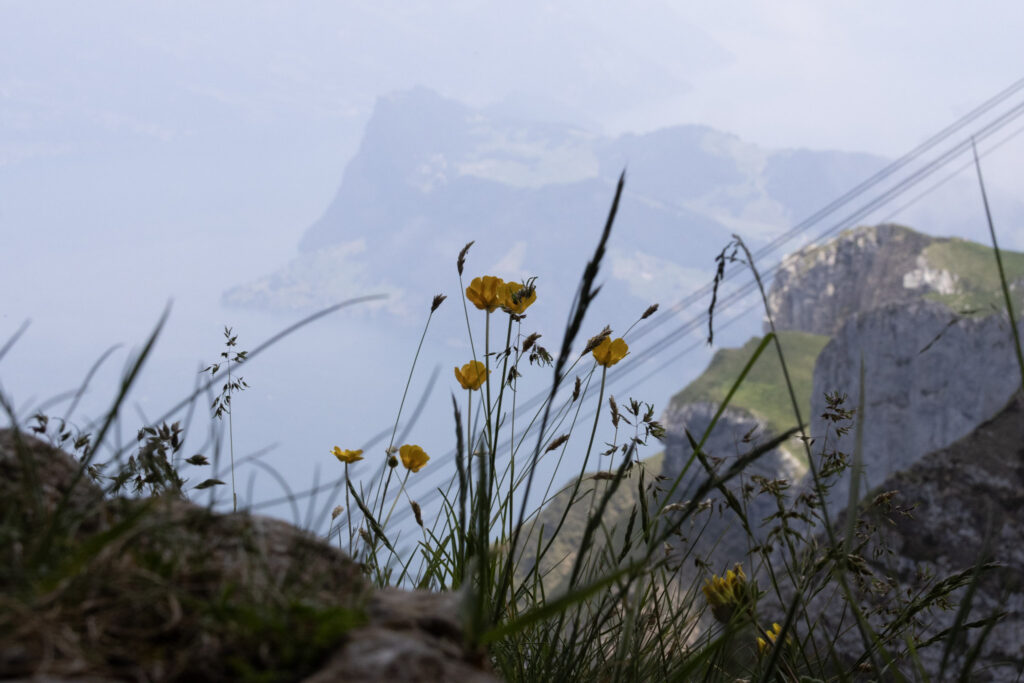
A week prior to our train journey, and friend of mine and I stopped by the Espace Ville de Genève ticket offices (located at Rue de la Terrassière 9, Geneva) to purchase a Municipal Saver Day Pass. In Geneva, this location is the only spot to purchase such passes, which allow you to travel on all public transport throughout Switzerland for a full day until 5am the next (think trains through the Swiss Alps, bus drives through medieval villages, and boat rides across pristine Alpine lakes).
The Swiss Saver Pass is available in most municipalities throughout the country, yet not all, and some districts may guard these for their own residents. A full list of which cities offer the pass and where it is valid may be viewed here.
Prices of the Municipal Saver Pass vary, and can be purchased up to six months prior to travel. The expression “the early bird gets the worm” applies in this scenario, for the sooner you know your departure date, the more advantageous the prices are, as low as CHF 52 for second class tickets (for reference, a one-way train ticket from Geneva to Lucerne is approximately CHF 84).
To make the most of our pass, we took the first direct train from Geneva to Lucerne at 6:45 a.m. I’ve become a strong advocate for train travel in Europe. Longing for a time that I never knew, train travel has this special power of transporting one back in time. Instead of fur coats and corsets, modern day travelers are equipped with iPhones and New Balance sneakers. Regardless the attire, I imagine passengers running to catch their trains as if in a black-and-white film, surrounded by the echoing sounds of wheels hitting iron rails and whistles announcing departures to faraway destinations.
The Golden Round Trip to Mount Pilatus
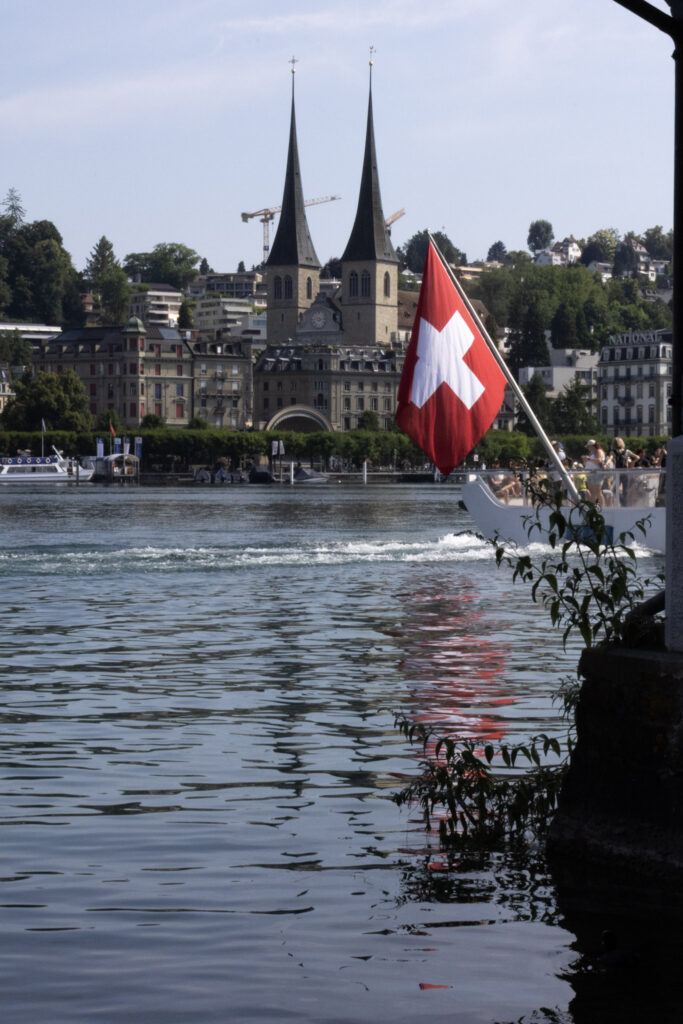
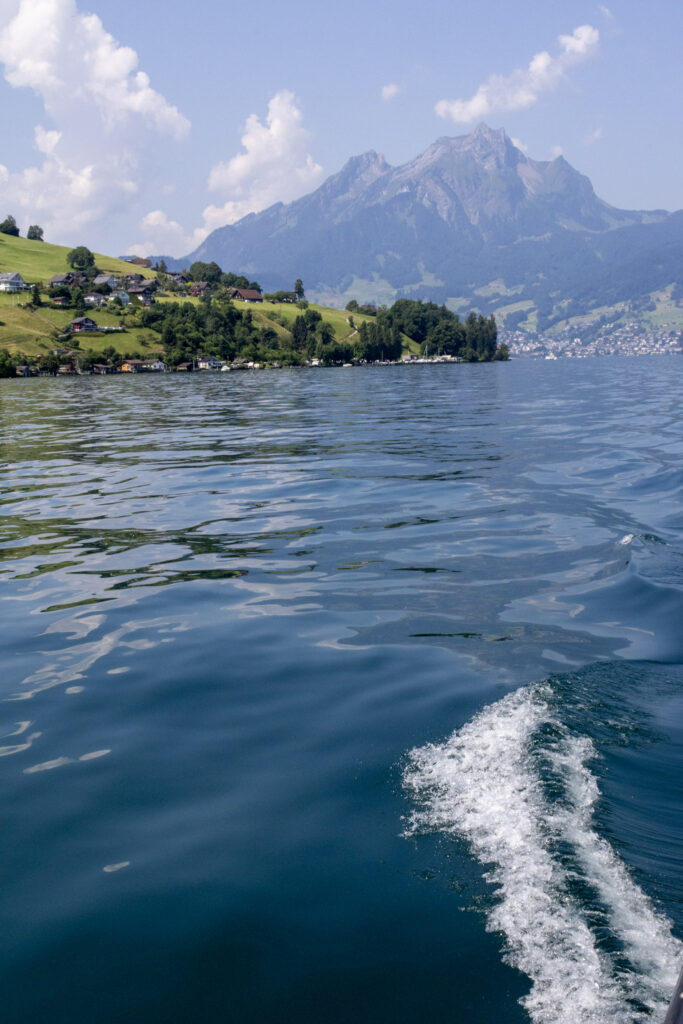
Step 1: Boat ride from Lucerne to Alpnachstad
Conveniently located in front of the Lucerne train station, we joined the herd of English and German speaking tourists to pier 2 to board a steamboat traveling across Lake Lucerne to Alpnachstad, make stops across Swiss villages such as Bürgenstock (where Audrey Hepburn had a home during her marriage, but more on that later).
The journey from Lucerne to Alpnachstad is the beginning of what is known as the “Golden Round Trip” to Mount Pilatus, with a series of transport that appear overwhelming, but are very tourist-friendly and easy to access. The first leg of the journey was perhaps one of my, if not my most, favorite part- an hour and a half of a lake breeze in an old-fashioned boat across post-card worthy views, lake-side chalets with peaks the sizes of giants soaring from lush rolling hills, remind me of scenes of hobbit homes in the Lord of the Rings.
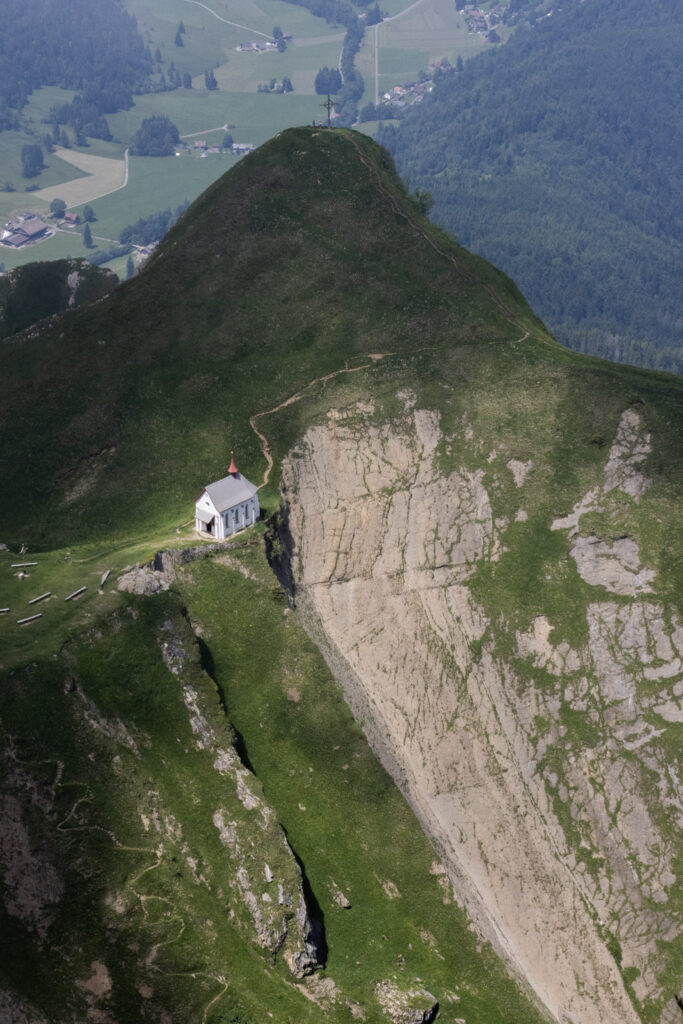
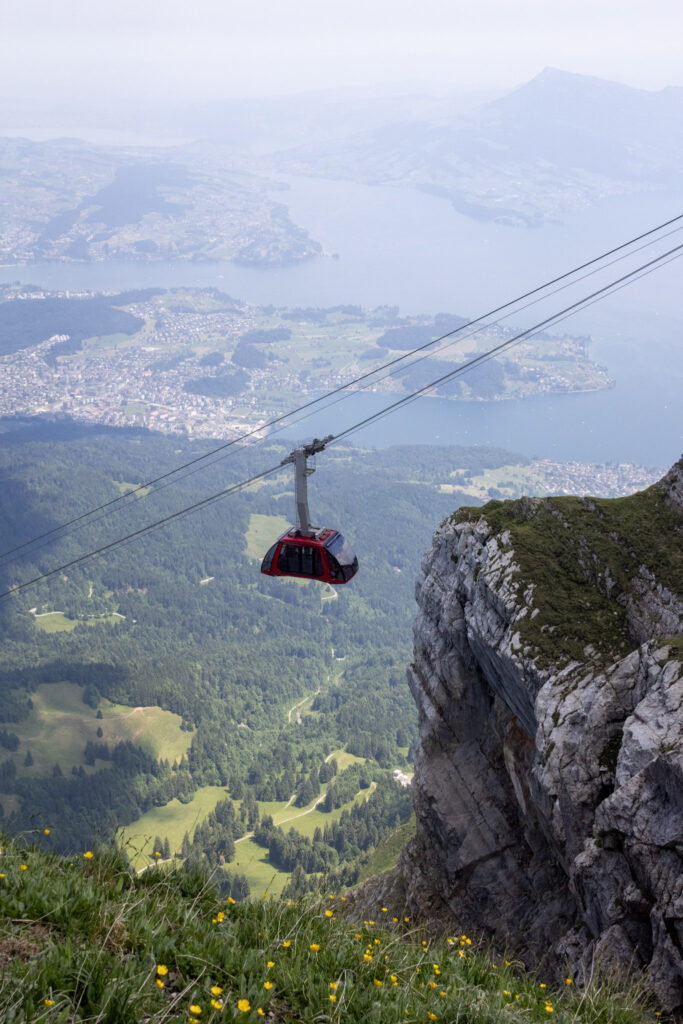
Step 2: Ride in the world’s steepest cogwheel train to Mount Pilatus
From Alpnachstad, the Golden Round Trip is followed by the world’s steepest cogwheel train at a 48° incline in some parts, pushing passengers backwards into their seat cushions. It seemed innocent from the outside, however at times I did feel my stomach somersault, with the woman next to me taking sharp inhales when the railway tracks came into view, appearing as if we were climbing directly into the sky.
Built in 1889, the railway to Mount Pilatus was innovative for its time with two horizontally rotating wheels, showcased at the Paris World Fair that same year. In June 2023, the train was renovated with flashy red railcars, an investment of CHF 55 million. To see videos of the early days of the cogwheel train, the Mount Pilatus website has a full library which may be accessed here.
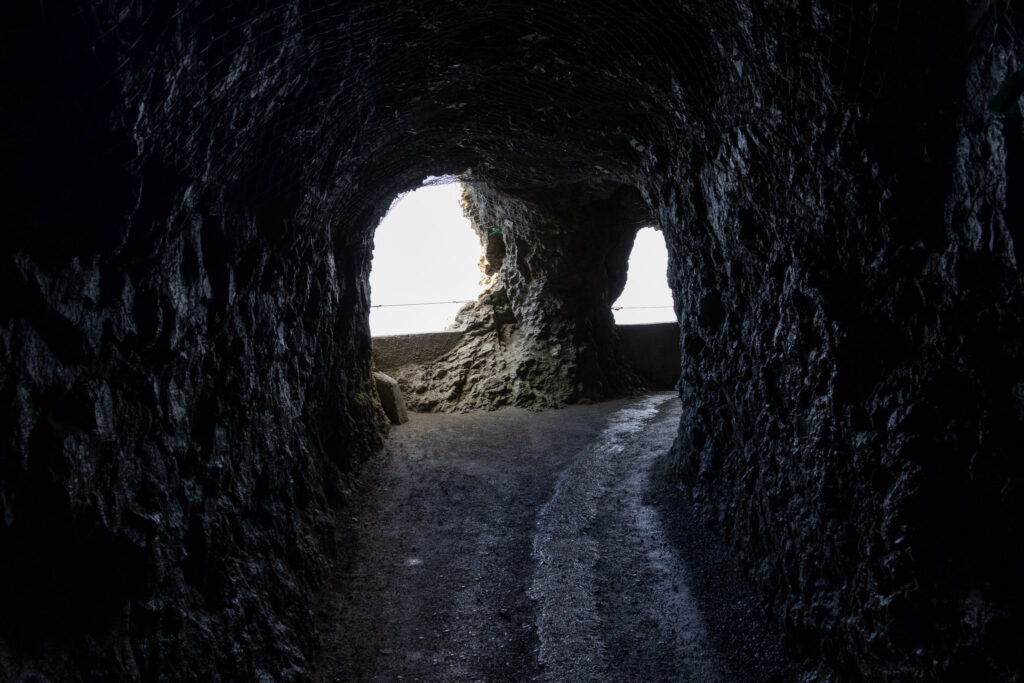
Arriving at 2,118m above sea level, the view from Mount Pilatus is…in a word, breathtaking. Seeing clouds below us and mountain peaks below, it seemed that we were on a lost island. Trails zigzag in which way, leading to various paths throughout the mountains. We took the path frequently traveled through caves, where legend has it that healing dragons once slept.
Facilities are limited atop Mount Pilatus, with a restaurant located within the Pilatus-Kulm Hotel, with crisp white table cloths and cheese burgers at nearly CHF 40, the competition for restauration in the mountains is slim. While service was great, comparable to a Midwestern Olive Garden without the breadsticks at best (if you know, you know), the food was nothing to write back home about. A cafeteria is also next door with significantly lower priced options.
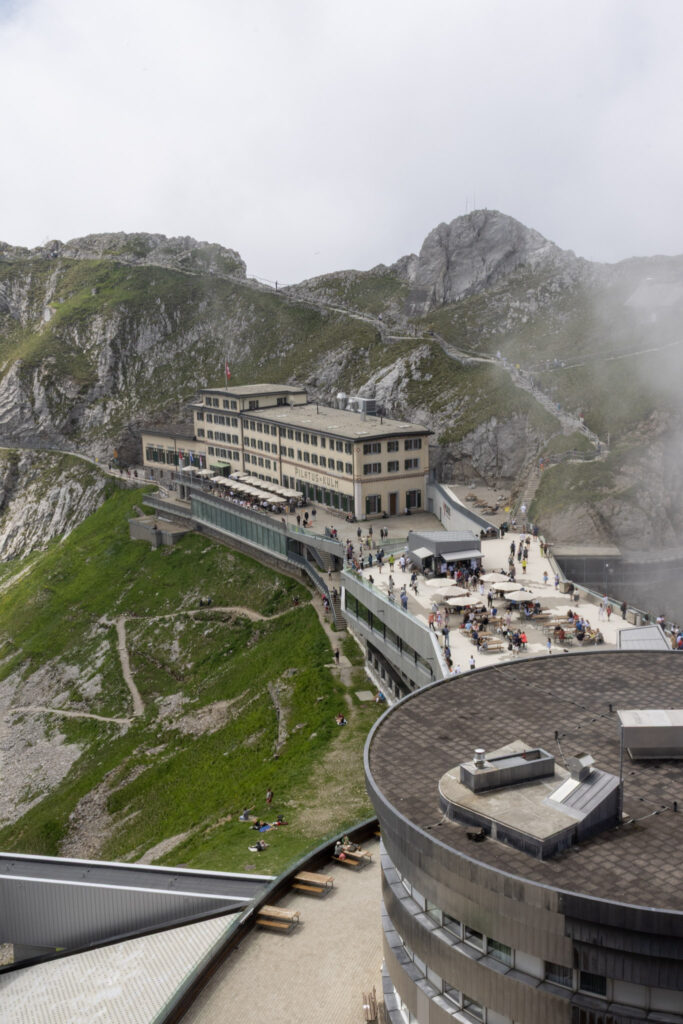
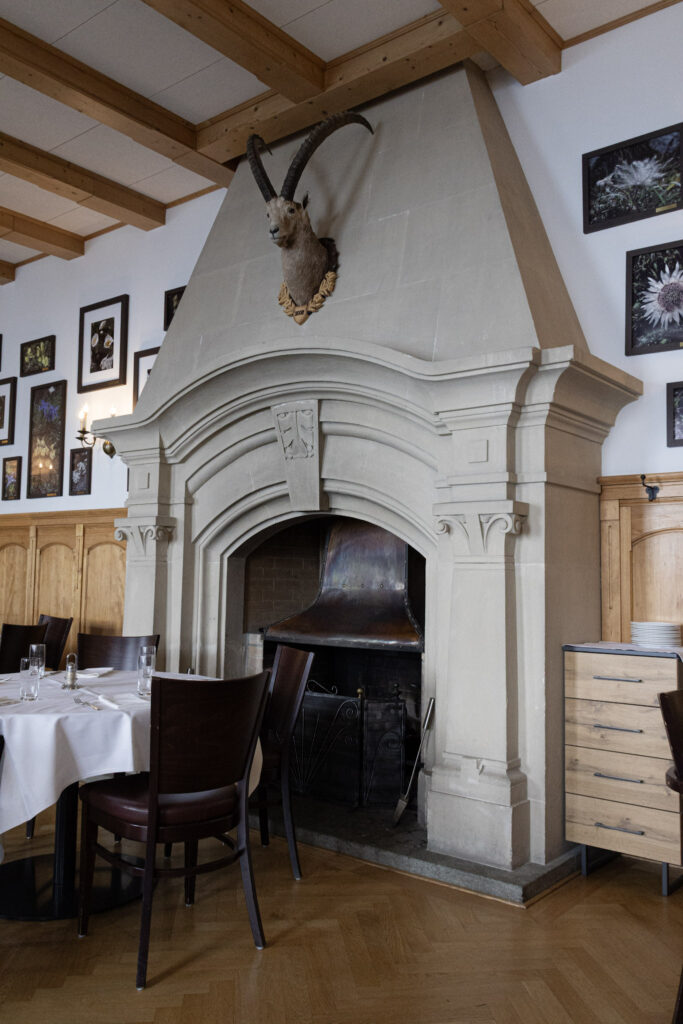
Step 3: Descend from Mount Pilatus to Kriens in a series of cable cars
This journey was not my first attempt at visiting Mount Pilatus. When a friend from the US came to visit years back, we mustered the courage to take the cable car up the summit. Terrified of cable cars, hot air balloons and planes (although I have and will continue to use these modes of transport, because we only get one life and why not make it something to write blog posts about?). However, when arriving at the ticket counter, we learned that the cable car was closed for the day due to maintenance. I wasn’t sure whether to feel terrified or relieved.
The Golden Round Trip begins its descent via a series of cable cars. The first is what’s known as the dragon ride (the dragon legend is really played up in these parts), what feels like a large soccer-mom van that descends from Mount Pilatus to Fräkmüntegg.
From Fräkmüntegg (can you say this 10 times fast?), passengers will need to scan their tickets a second time around to board a more traditional like cable car to Kriens. We were joined by a Swiss-German speaking father and his son, who gave a friendly “bonne journée” before leaving. The multitude of languages in this small country never ceases to amaze me.
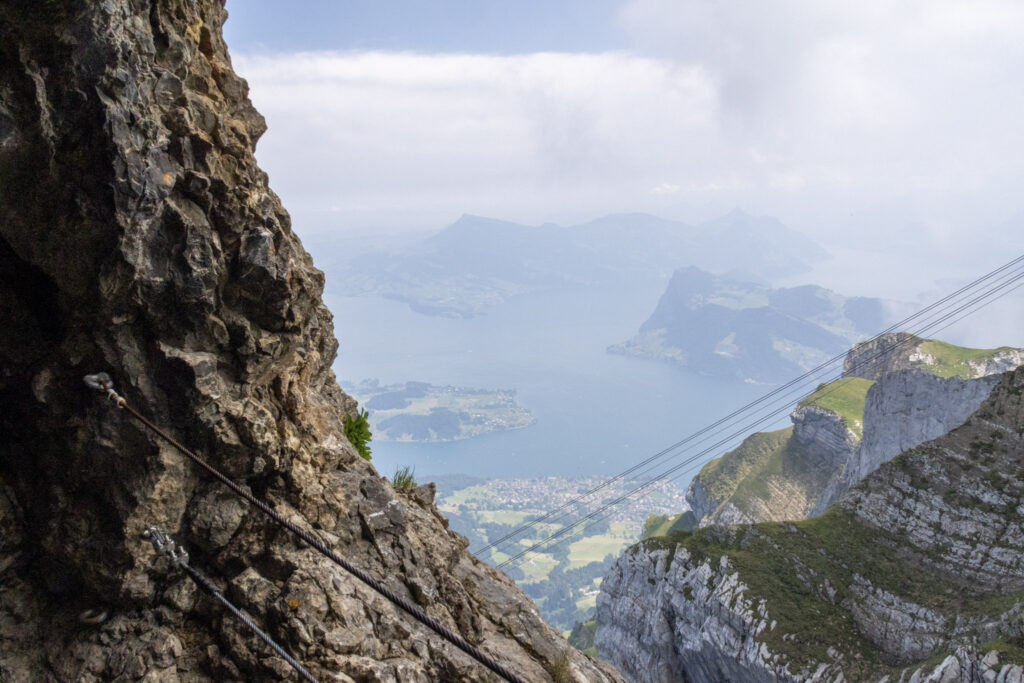
Step 4: Take bus #1 from Kriens to Lucerne
The final stretch of the Golden Round Trip is less obvious or tourists, who seem a bit lost coming back to ground level logistics. Navy blue signs point to the direction of Kriens near the closest to bus # 1 (about a 5-to-10-minute walk), leading passengers swiftly back to Lucerne.
Bus tickets are covered by the Swiss Saver Pass or can be purchased at the machine at the bus stop (between CHF 2.60-andCHF 4.00 depending on zones and discounts).
Evening in Lucerne
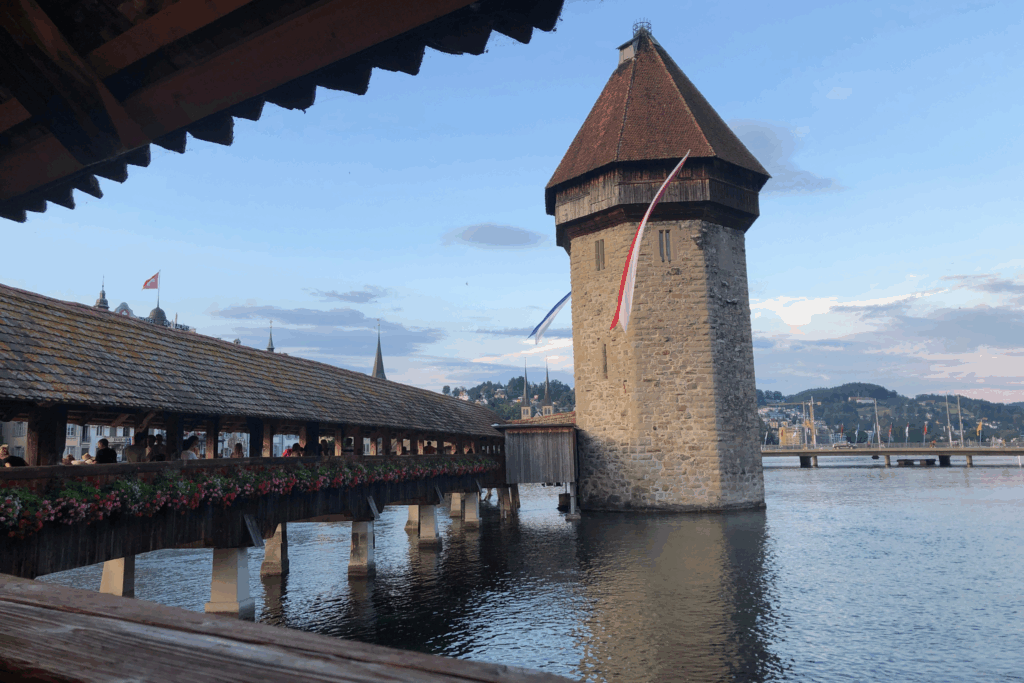
Lucerne was one of the highlights of a road trip across Switzerland my husband and I took in the summer of 2020, when travel regulations were restricted due to COVID-19. Not to be dramatic, but it didn’t seem like a real place- the vanilla swirls in the pink sunset-lit sky made it seem as if we had stepped into a painting.
A small city staged upon a lake and within arm’s reach of the mountains, Lucerne is a pretty picture worth exploring. I still have a snapshot in my mind of a full moon appearing from behind the mountain peaks, making it seems as if we could have pulled it down with a lasso.
After a day on Mount Pilatus, close your evening with a stroll through Lucerne, crossing over Europe’s oldest covered bridge (locally known as Kapellbrücke), connecting the modern city to the old. A fire in 1993 destroyed many of the 17th-century paintings that once adorned the wooden bridge, but sixty were salvaged and remain intact today. Kapellbrücke, or Chapel Bridge, faces another iconic landmark in Lucerne: the Water Tower. Built in 1300, the tower has served various governmental purposes throughout history, including as a treasury, prison, and even a torture chamber.
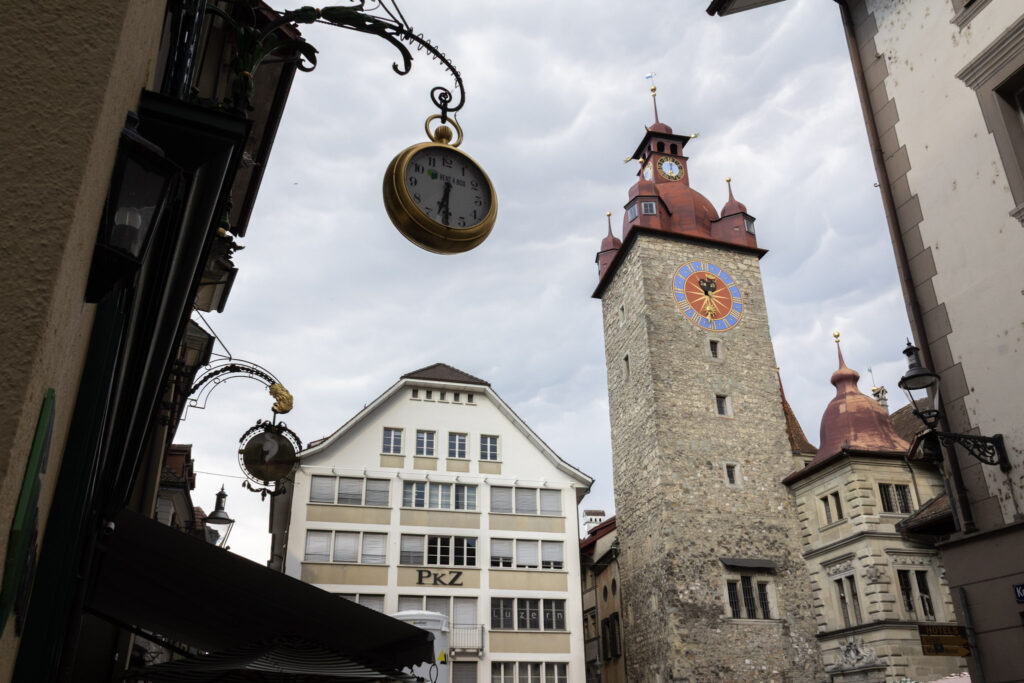
What to pack
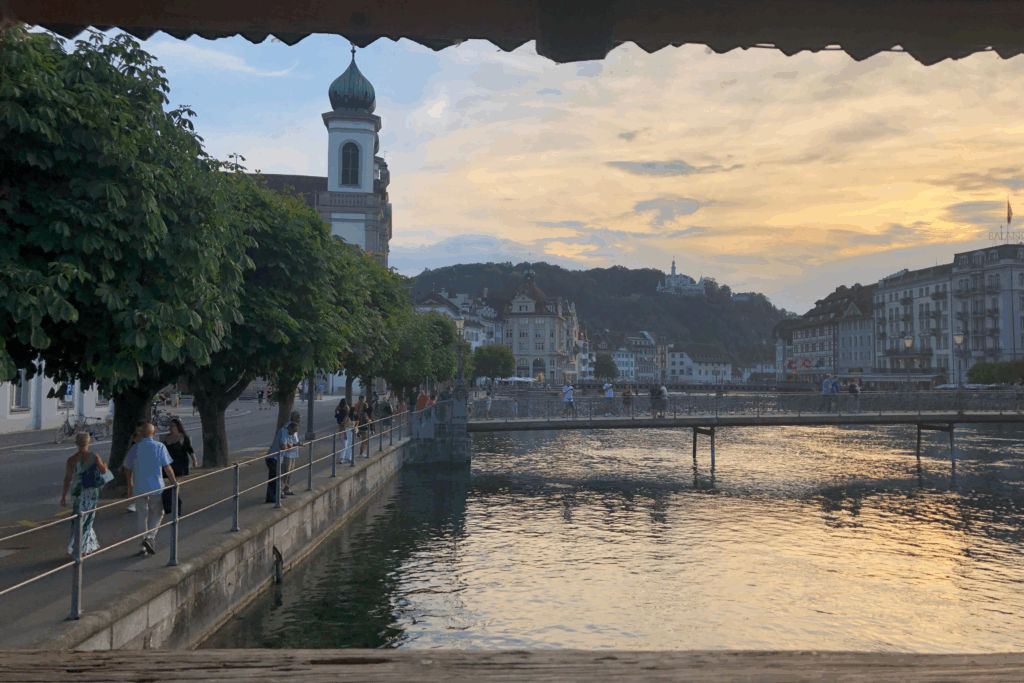
Clothing
- Lightweight jacket or windbreaker (even in summer — it’s significantly cooler at the summit, making it an ideal spot during European heatwaves…)
- Fleece or warm layers (especially in autumn)
- Comfortable walking shoes or hiking boots (trails at the top can be rocky or slippery)
- Hat & sunglasses (the sun is stronger at altitude)
Daypack Essentials
- Water bottle (refillable; there are fountains at the summit)
- Snacks or a picnic (restaurants are available, but options are limited and expensive)
- Sunscreen (even on cloudy days — UV is stronger at altitude)
- Camera or smartphone (for stunning views!)
- Portable charger/power bank (this has been a life saver on many trips)
Travel Necessities
- Round trip ticket (Golden or Silver Route) — printed or saved on your phone
- Swiss Travel Pass or Half Fare Card, if you have one
- Cash & credit card (some mountain kiosks or cafés prefer cash)
- Map or downloaded offline map (in case of poor signal)
